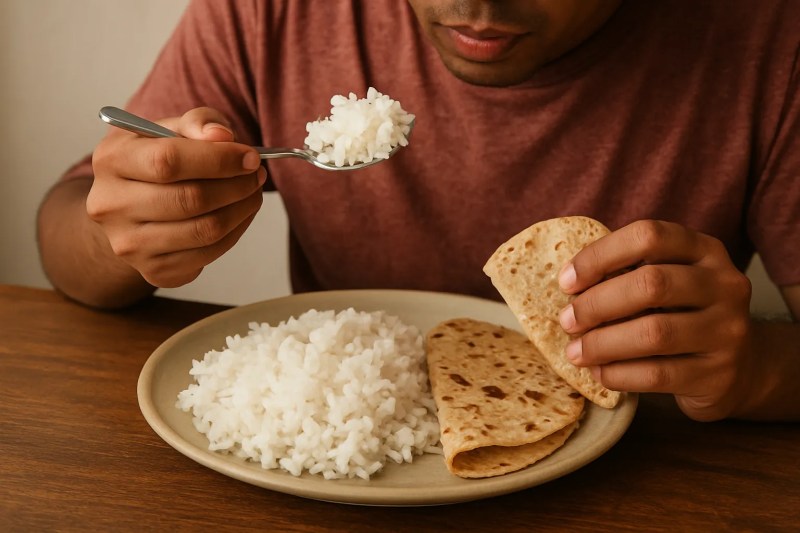
Image: AI
A large-scale survey conducted across India by the Indian Council of Medical Research (ICMR) has revealed that dietary habits in the country are changing rapidly, leading to an increase in diabetes and obesity. The study indicates that a significant portion of carbohydrates in the Indian diet comes from 'low-quality' sources, primarily white rice, finely milled flour (stripped of its bran and nutrients), and excessive added sugars.
The study, conducted by ICMR-INDIAB (India Diabetes), recommends that Indians should replace these dietary staples with vegetables, milk, and animal-based proteins.
The research, published in Nature Medicine, found that despite considerable variation in nutrient intake across different states, most Indians derive 62% of their calories from carbohydrates, one of the highest rates globally.
The cross-sectional survey, carried out in collaboration with the Madras Diabetes Research Foundation (MDRF), also identified that a substantial amount of carbohydrates originates from low-quality sources such as white rice, milled whole grains, and added sugar.
While white rice is prevalent in the South-East and North-East regions, wheat is more commonly consumed in the Northern and Central parts of the country. The study, which surveyed 1,21,077 Indian adults from urban and rural areas across 36 states, found that high carbohydrate intake and their primary food sources were associated with an increased metabolic risk, including diabetes, pre-diabetes, and obesity.
Dr. V. Mohan stated that reducing daily carbohydrate intake (from sources like rice and flour) by just 5% and replacing those calories with plant-based proteins (such as lentils, soybeans) or milk proteins can significantly lower the risk of diabetes and pre-diabetes.
He further explained that substituting carbohydrates with red meat or fats (oils, ghee) does not yield the same health benefits.
The problem is not solely sugar, but the excessive consumption of rice and wheat in daily meals, which is contributing to diseases like diabetes and obesity.
Lead author and President of MDRF, Dr. RM Anjana, commented that their findings clearly indicate that the typical Indian diet, high in carbohydrates from white rice or wheat flour and low in quality protein, is putting millions at risk.
Switching from white rice to whole wheat or millets alone is insufficient unless the total carbohydrate intake is reduced and more calories are derived from vegetable or dairy proteins.
Senior scientist Sudha noted that whether people consume more rice or wheat, the high intake of carbohydrates has a similar adverse effect on health across the board. Therefore, it is crucial to implement changes in government policies and health campaigns to encourage the consumption of more lentils, milk, and protein-rich foods, while reducing carbohydrates and excessive oil/ghee intake.
Dr. Shilpa Bhupathiraju mentioned that reducing saturated fats (like excessive oil/ghee) is challenging for many, but promoting healthy oils, lentils, and legumes could lead to significant improvements in the nation's health.
The study also revealed that millets are primarily consumed in only three states – Karnataka, Gujarat, and Maharashtra. Here, people eat grains like ragi, jowar, and bajra, which are proving beneficial for their health.
Updated on:
01 Oct 2025 01:04 pm
Published on:
01 Oct 2025 01:03 pm
Big News
View AllHealth
Trending
Lifestyle

